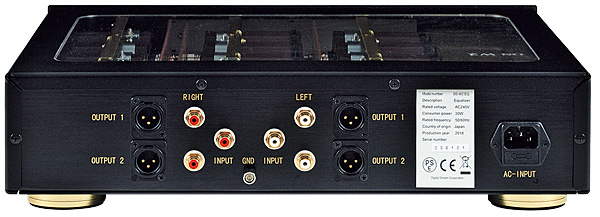DS Audio DS-W2 Cartridge Page 2
Not So Dry
Curiously, though the DS-W2 creates a sense of 'more bass', the same track had marginally more impact via the Master 1. I almost feel guilty reporting it, because the differences are truly minimal, and I had to try other titles to confirm it.
The entire gig saved for posterity on Twisted Sister's Live At The Marquee 1983 [Atlantic 603497861378] has a solid, crowd-pleasing bottom end, the younger DS-W2 sounding fatter and more 'live', the Master 1 drier.

These are not deal-breakers but deal-makers, and your speakers may end up making the choice for you. So controlled are the Wilson Yvettes [HFN Feb '17], so commanding the bass, that it proved the perfect tool for assessing the variations, while never being overly excited by the DS-W2's excess. If you're having a demo, try to hear it through speakers with well-controlled woofers.
As for the rest of the spectrum, again, it's a close call. Doug MacLeod's Break The Chain [Reference RM-2519] offers both twangy guitars and textured vocals, the DS-W2's midband being detailed and open, with a slightly greater show of warmth than the more analytical Master 1. Transient attack and dynamic contrasts, too, were within sight of the Master 1's, again revealing a flipside nature to that of the dearer design. Which reminded me of a clearer analogy.
If I had to do a 'high concept' explanation (that's when someone pitches a film idea, in four words, eg, 'Godzilla meets Forrest Gump') then I would say it's 'valves versus solid-state'. While those of you who have stuck with me these past 35 years know that I am firmly of the tube persuasion, I also know it's possible to have too much of a good thing. And it's also the logic behind using solid-state amps with valve preamplifiers, or vice versa, to balance these two technologies.
In my all-valve system, the Master 1 has found a home capable of exploiting its strengths while accommodating its artefact-free, naked, open sound. The hint of richness that distinguishes the DS-W2 suggests that it might prove ideal for a solid-state set-up in need of a few degrees of heat.

With 'Sad Memory' from the Buffalo Springfield What's That Sound? box set [Atco/Rhino 03497 86066], a lone voice and a couple of guitars play in a wide open space, with distance between them. The DS-W2 portrayed this with all the air I heard 50 years ago over my modest 'first system' and which convinced me that stereo was more involving than mono.
Laser-Like Focus
mage placement was precise, solid, with an atmospheric three-dimensionality that made the speakers disappear. The soundstage was as wide and deep as the Master 1's, extending beyond the speaker's sides and with chilling amounts of depth. Here, too, Richie Furay's crystal-clear vocals were delivered with nary a hint of coloration.
On the difficult, inner-groove 'Broken Arrow' the cartridge tracked it perfectly, while the transitions from crowd noise to guitars, to whatever else Neil Young threw into his opus, could be appreciated in a wall of sound, of near-Spectorian grandeur, but could be singled out with laser-like focus. The DS-W2 has no problem handling all of the details in even the most cluttered of tracks. This is a reference-grade cartridge, and blessed relief for those hankering after a Master 1, at double the price.
Hi-Fi News Verdict
Probably the best way to put it is this: if someone suddenly stole the Master 1 in my system and replaced it with the DS-W2, the only thing that would convince me it had been changed is the colour of the light it emits. Forgive any suggestions of great disparities between this and the Master 1, possibly overstated for review purposes. In practice, it's like trying to tell the difference between Phil and Don Everly.
























































